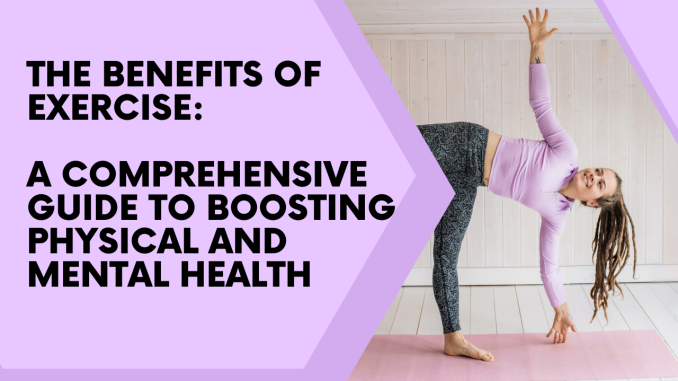
Exercise is one of the most effective ways to maintain and improve overall health. Regular physical activity benefits both the body and mind, reducing the risk of chronic diseases while enhancing mental well-being. Regardless of age or fitness level, incorporating exercise into daily life can lead to long-term health improvements.
Physical Benefits of Exercise
Engaging in regular physical activity has numerous benefits for the body, including:
- Improved cardiovascular health – Exercise strengthens the heart and improves circulation, reducing the risk of heart disease and stroke.
- Weight management – Regular activity helps maintain a healthy weight by burning calories and increasing metabolism.
- Stronger muscles and bones – Weight-bearing and resistance exercises improve muscle strength and bone density, reducing the risk of osteoporosis.
- Enhanced immune system – Exercise can help boost the immune system, making the body more resilient to illnesses.
Mental Health Benefits
Exercise is not only beneficial for physical health but also plays a significant role in mental well-being. Some of the mental health benefits include:
- Reduced stress and anxiety – Physical activity helps lower cortisol levels and promotes the release of endorphins, leading to stress relief and improved mood.
- Better sleep quality – Regular exercise can help regulate sleep patterns and improve restfulness.
- Increased cognitive function – Exercise has been shown to enhance memory, concentration, and overall brain health.
- Boosted self-confidence – Engaging in fitness activities can lead to improved self-esteem and a sense of accomplishment.
Different Types of Exercise
There are various forms of exercise, each offering unique benefits. A well-rounded fitness routine should include a mix of the following:
- Aerobic exercise – Activities like running, swimming, and cycling improve cardiovascular health and endurance.
- Strength training – Weightlifting and bodyweight exercises enhance muscle strength and bone density.
- Flexibility exercises – Yoga and stretching improve mobility, balance, and flexibility.
- Balance and coordination exercises – Activities like Pilates and tai chi help improve stability and prevent falls, especially in older adults.
Tips for Staying Active
Incorporating exercise into daily life doesn’t have to be complicated. Here are some simple ways to stay active:
- Set realistic goals – Start with achievable fitness goals and gradually increase intensity.
- Find an activity you enjoy – Whether it’s dancing, hiking, or playing sports, choosing a fun activity makes it easier to stick with a routine.
- Stay consistent – Aim for at least 150 minutes of moderate-intensity exercise per week.
- Make it a habit – Incorporate exercise into daily routines, such as walking or biking to work.